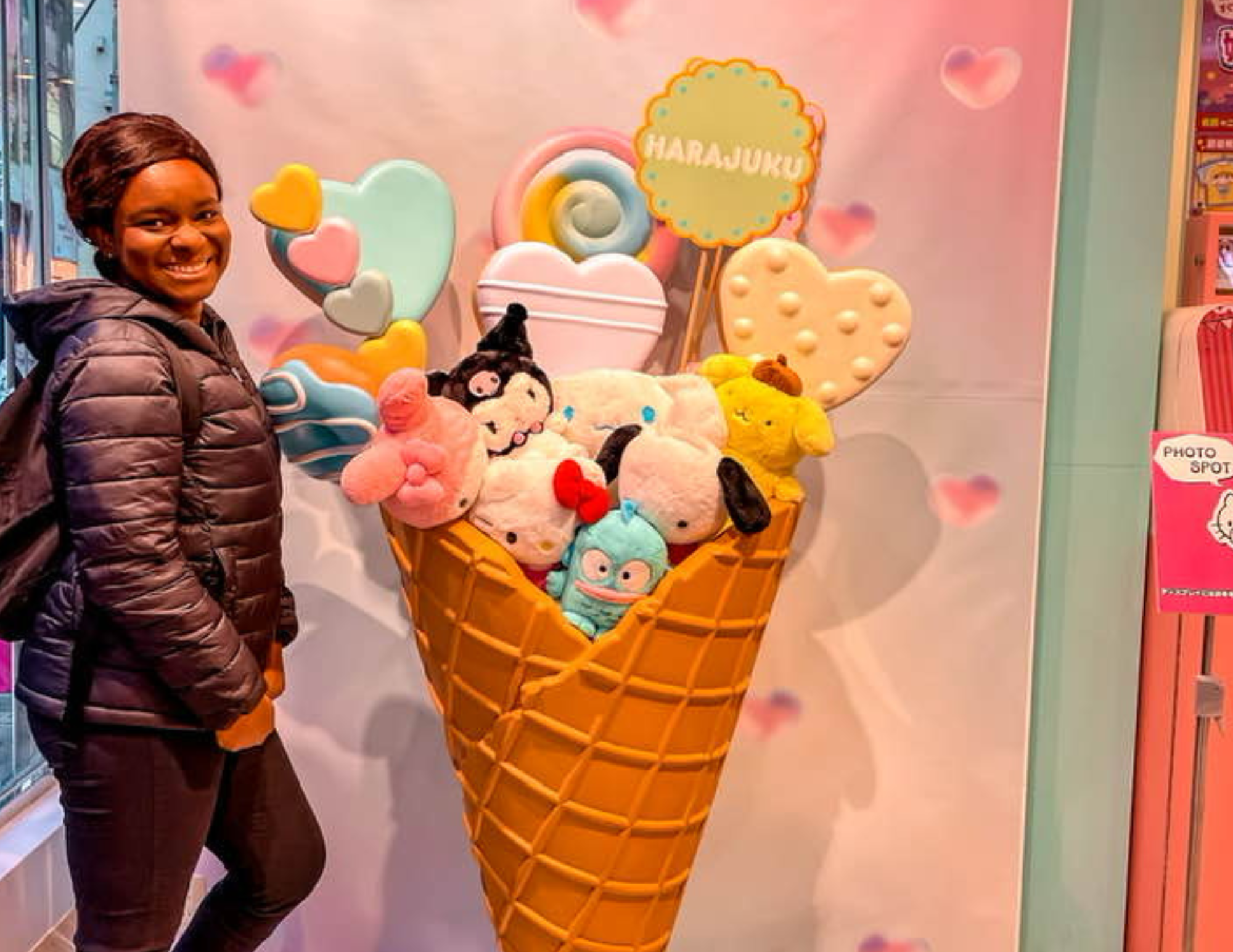Harajuku is exactly as loud, candy-colored, and chaotic as everyone says, and I adore it. We rolled up to Takeshita Street and did what you do: joined the long queue at Santa Monica Crepes, debated toppings like it was a life decision, and then ate our crepes while shuffling with the crowd. It’s packed (always), a little extra (obviously), and one of those “only-in-Tokyo” afternoons you remember.
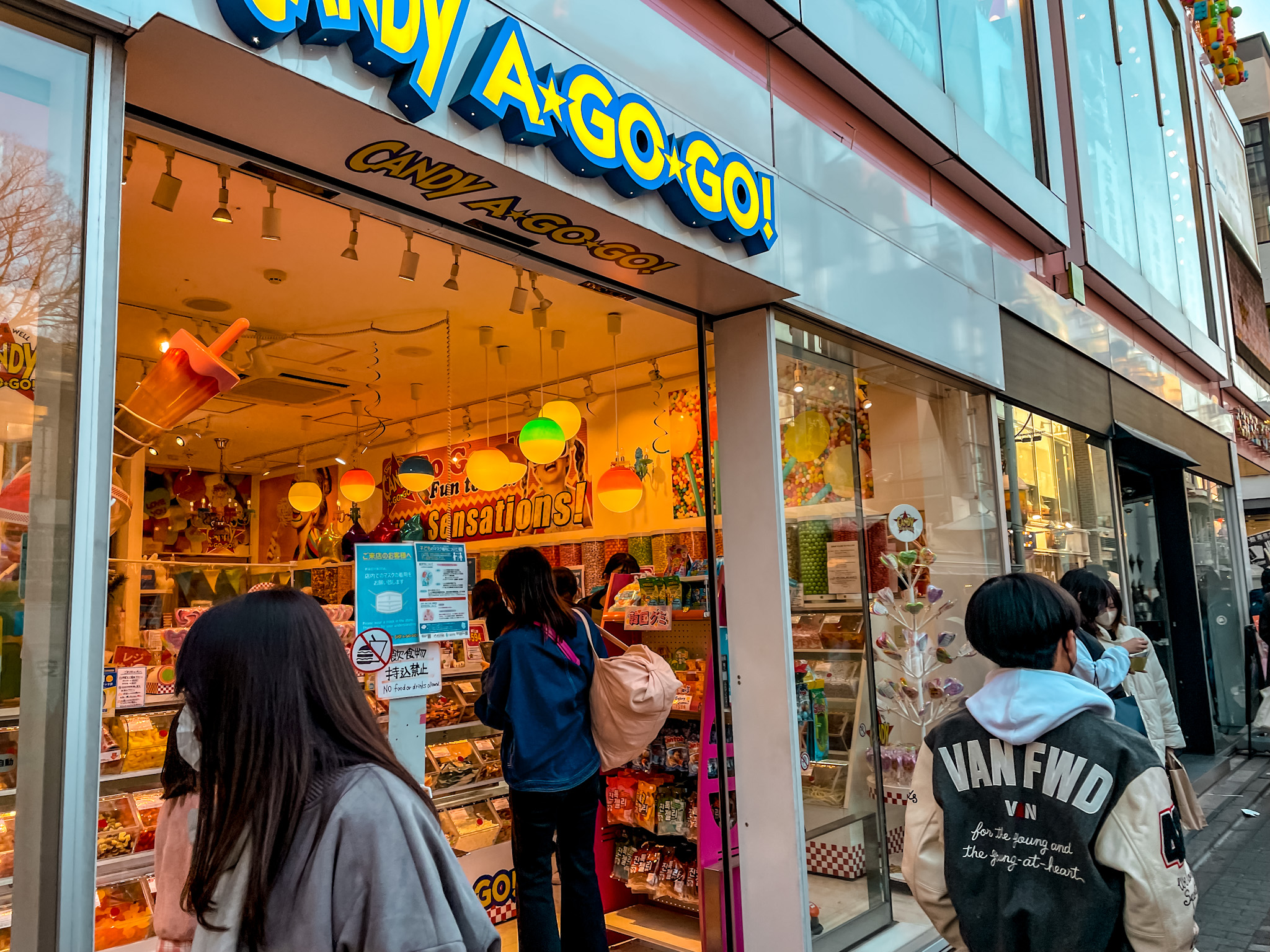
What is Harajuku (and why is everyone here)?
Harajuku is Tokyo’s youth-fashion heart, think kawaii boutiques, thrift and vintage finds, sweets-on-a-stick, and themed accessories, centered around Takeshita-dōri, a short, punchy pedestrian street opposite JR Harajuku Station. Most shops keep late-morning to evening hours (roughly 11:00–20:00), so the street doesn’t really wake up until late morning.
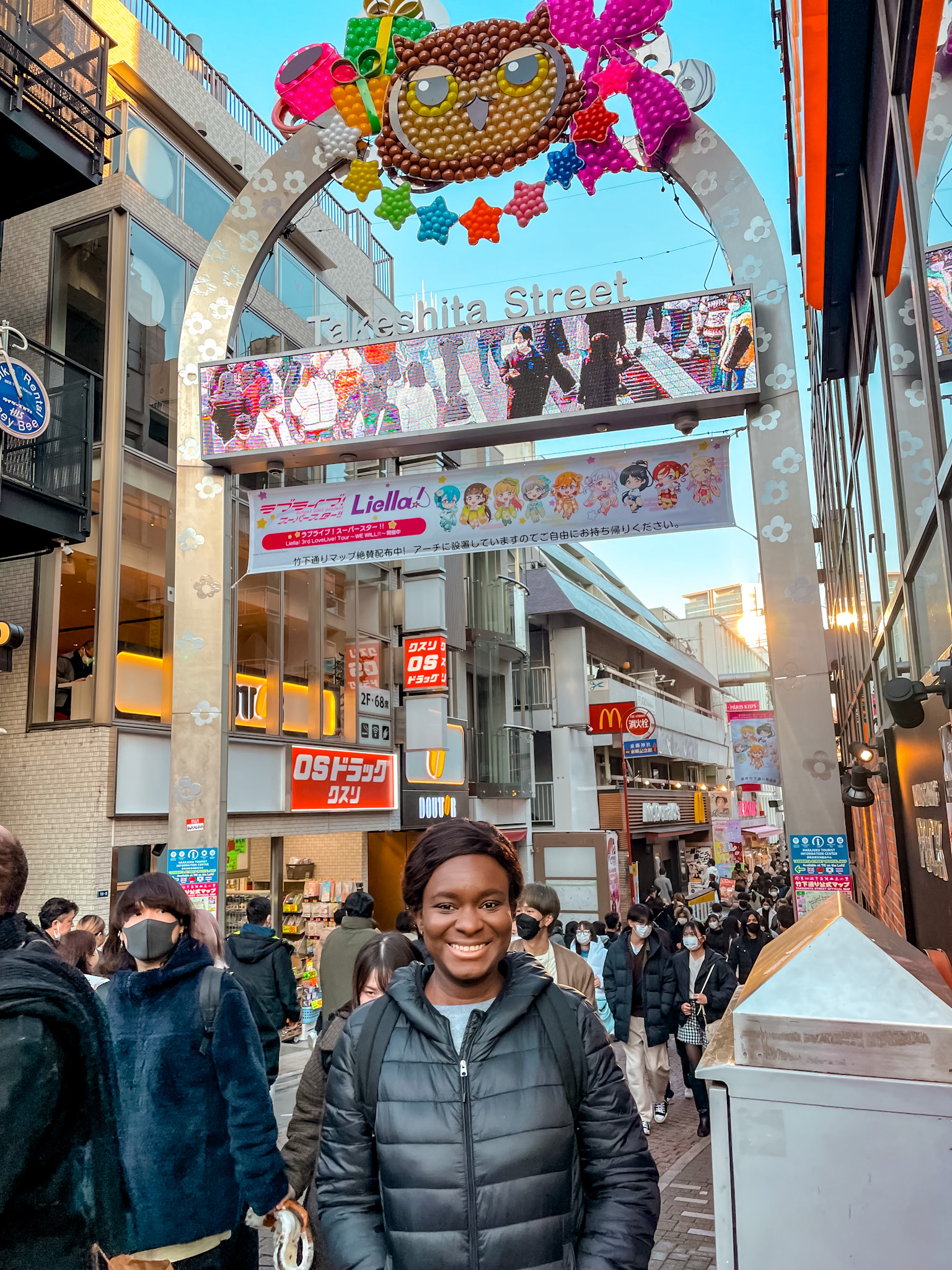
Takeshita Street in a nutshell: about 400 meters of fun-food-fashion, shoulder-to-shoulder on weekends and holidays. It’s famous for crepes, rainbow snacks, purikura booths, and fast-changing micro-trends.
Getting there: Ride the JR Yamanote Line to Harajuku (JY19) and take the Takeshita Exit, the street starts right across the road. You can also use Meiji-jingūmae (Chiyoda/Fukutoshin Lines); it’s a short walk.
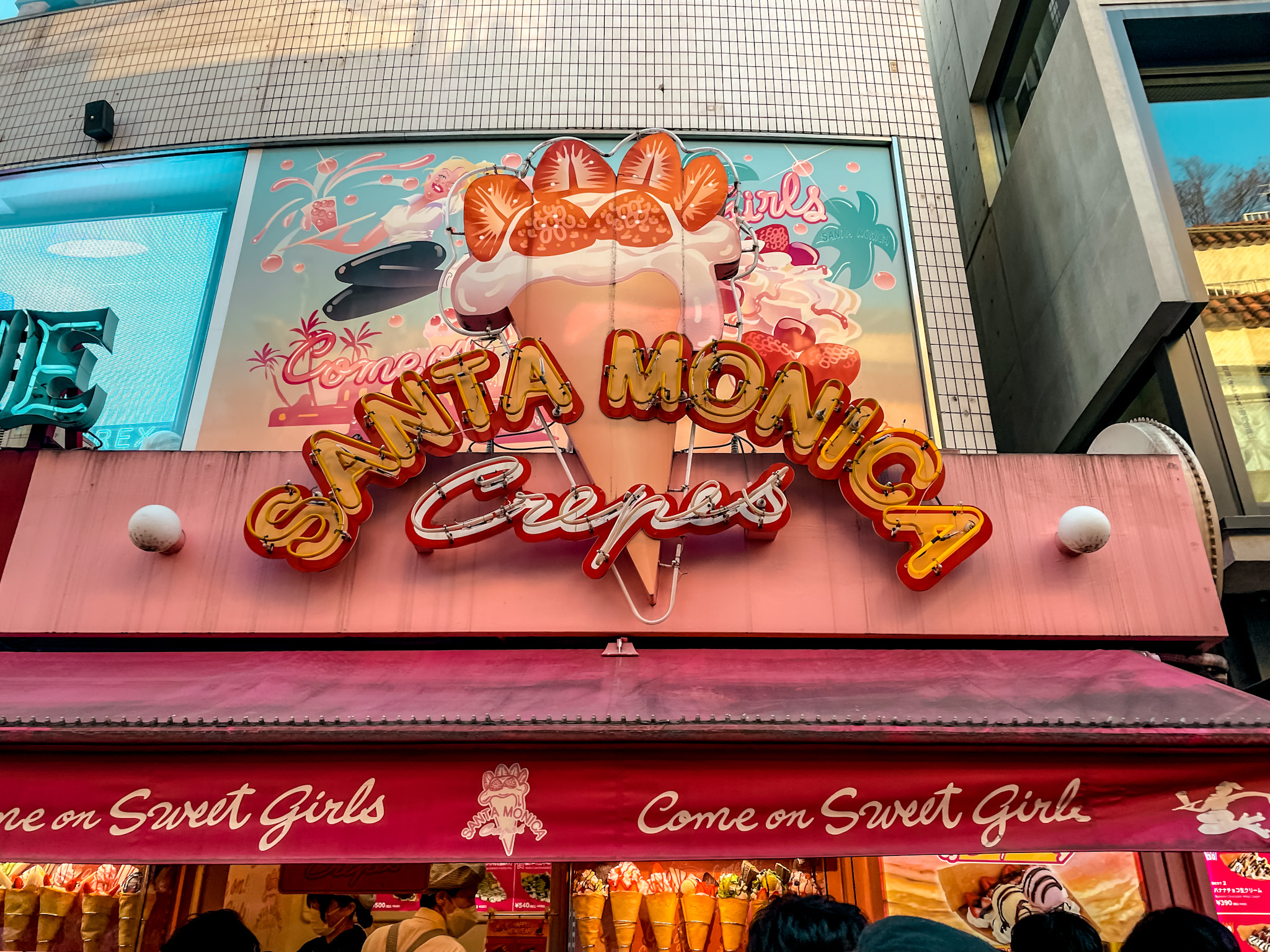
Nerdy station note: Harajuku Station got a major rebuild in 2020 to handle the crowds, with plans announced in 2024 to bring back a version of the beloved old wooden façade as part of a new complex.
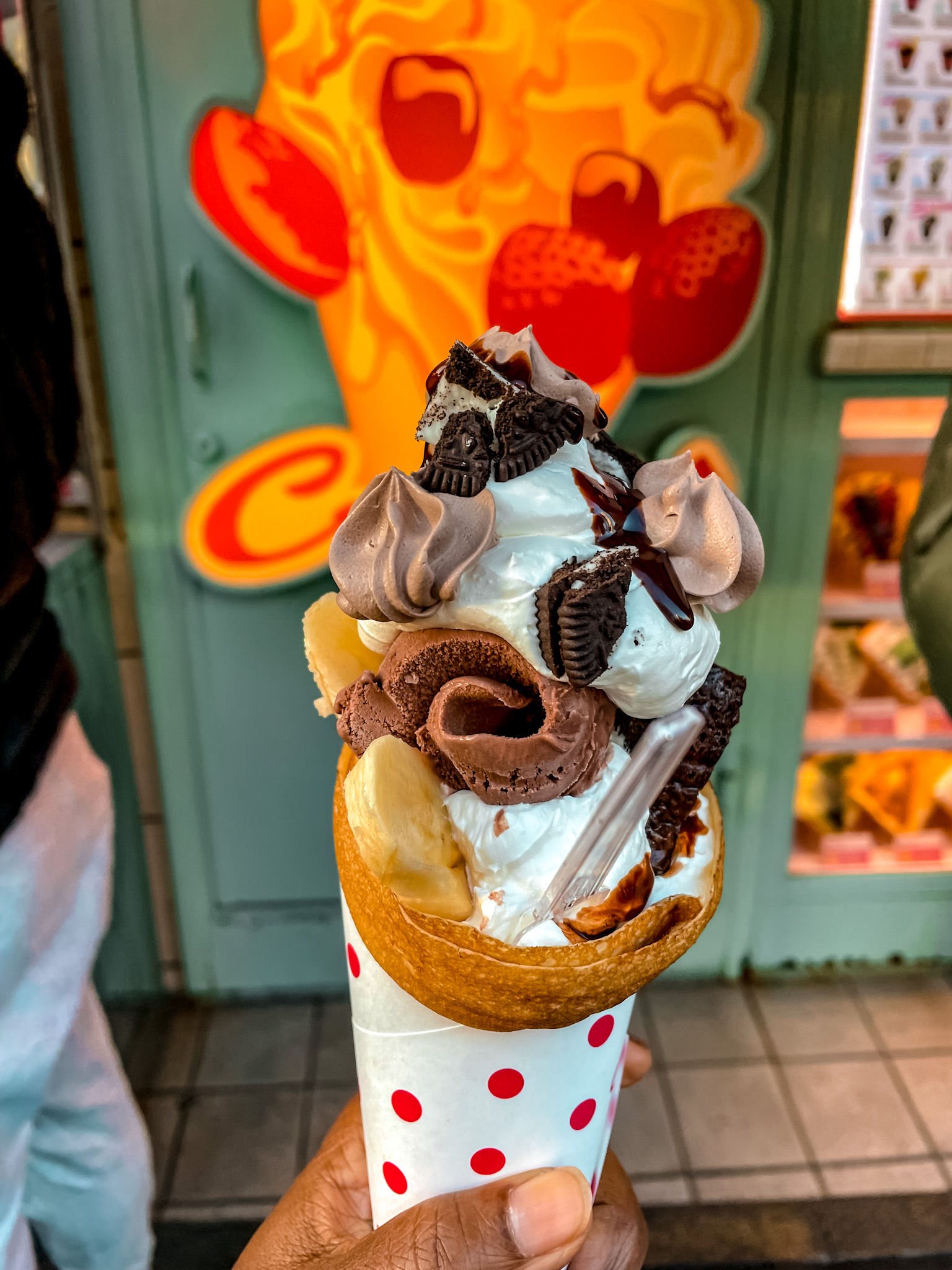
Santa Monica Crepes: the line, the menu, the vibe
We queued at Santa Monica Crepes (the cute pink-and-white stand on/near the end sections of Takeshita), and yes, the line was long. Prices generally run under ¥1,000 per crepe depending on fillings, and the display of plastic “sample crepes” makes choosing weirdly harder (too many good combos). Expect fast service once you reach the window.
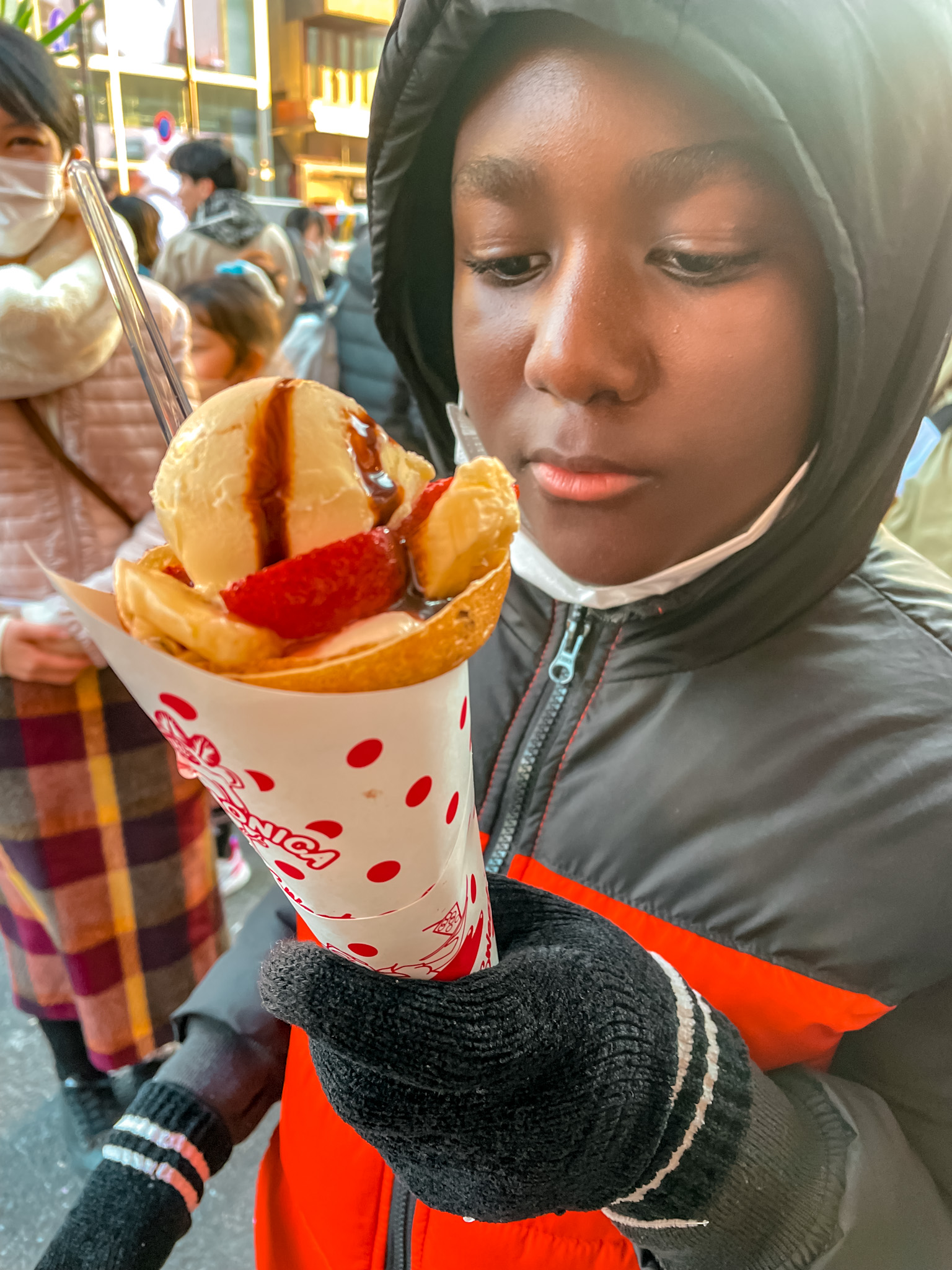
Harajuku crepes themselves are a scene. Japanese-style crepes became a thing here in the late 1970s (shoutout to rivals Marion Crepes and Angel’s Heart), morphing from sit-down French desserts into handheld sweets stuffed with whipped cream, fruit, custard, and ice cream. That Harajuku “crepe while walking” culture basically started on Takeshita.
When to go: Evenings can be gentler; weekends after lunch are sardine city. Many Takeshita shops operate around 11:00–20:00, and the street is pedestrianized most afternoons, so plan your stroll and sugar hit accordingly.
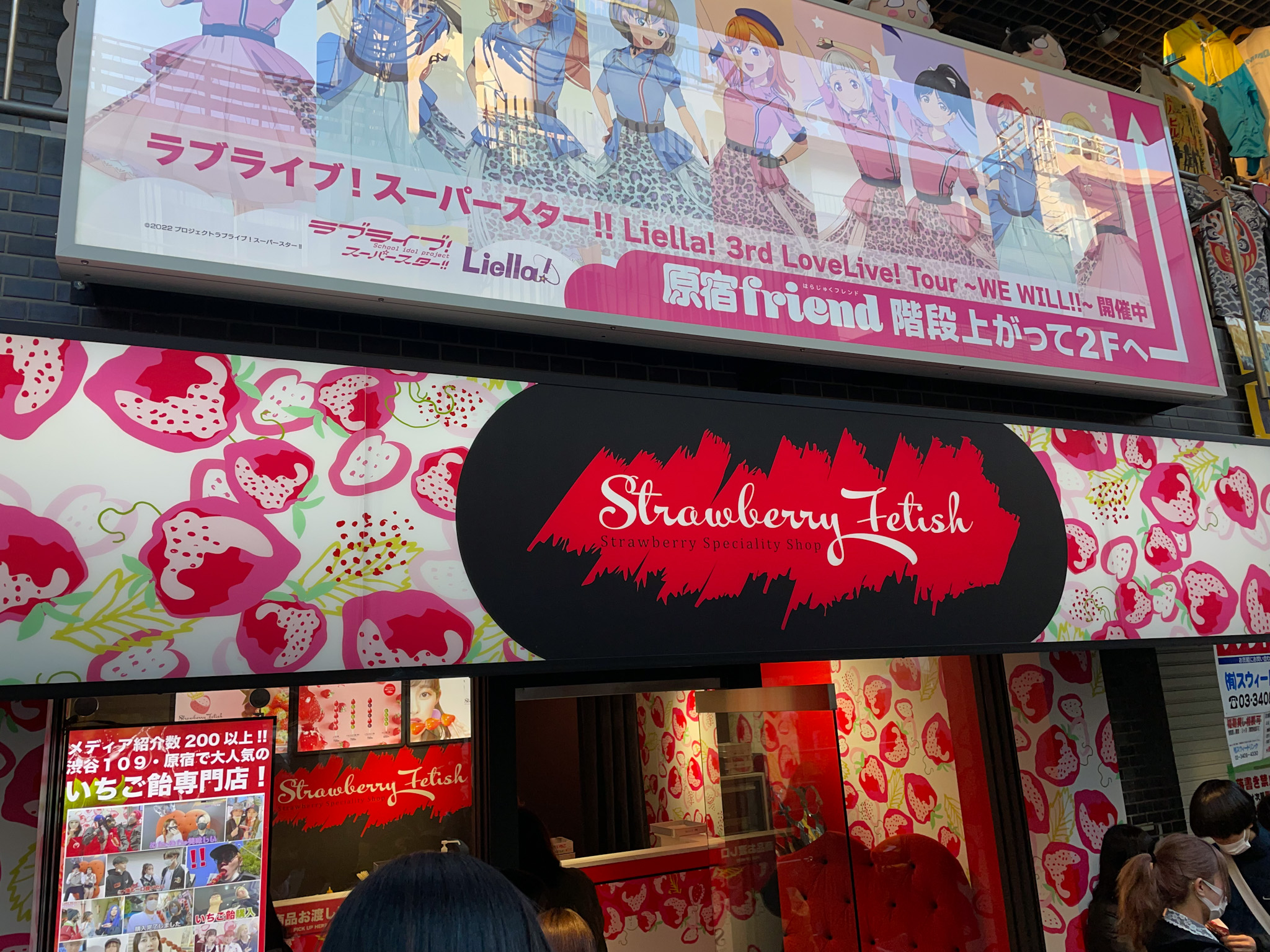
Surviving (and enjoying) Takeshita Street
- Timing: Aim for weekday mornings just after 11 or later evenings. Midday weekends are the peak pile-up. Shops skew 11:00–20:00.
- Flow: It’s a pedestrian paradise during core hours, so move with the stream and step aside for photos/snacks.
- Backup plans: If Santa Monica’s line is wild, peek at Marion Crepes or other stands, there are several on/near the strip.
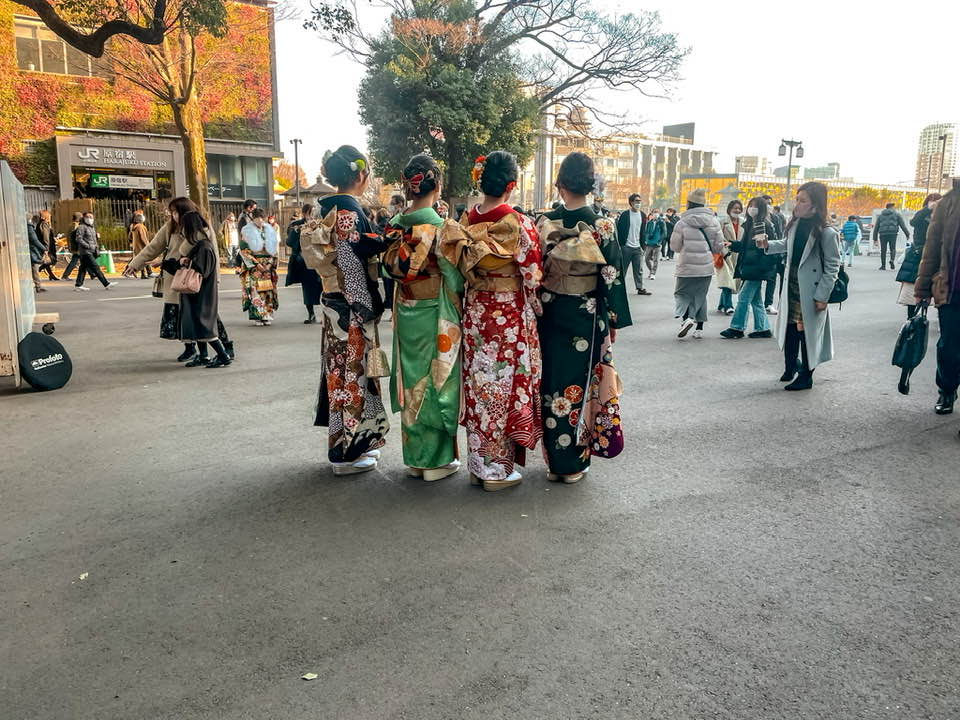
What else to do around Harajuku (all walkable)
Meiji Jingu & Yoyogi Park (calm after the candy)
Two minutes from the madness, you can step through towering torii into Meiji Jingu, forest paths, shrine rituals, and peace. It’s free and open daily from sunrise to sunset (exact times shift monthly). Next door, Yoyogi Park is always-open green space for picnics and people-watching.
Omotesandō (grown-up shopping, architecture, food)
Walk ten minutes to tree-lined Omotesandō, often called Tokyo’s Champs-Élysées: flagship brands, cafés, and Tadao Ando’s Omotesandō Hills (shops/cafés typically around 11:00–20:00; restaurants later).
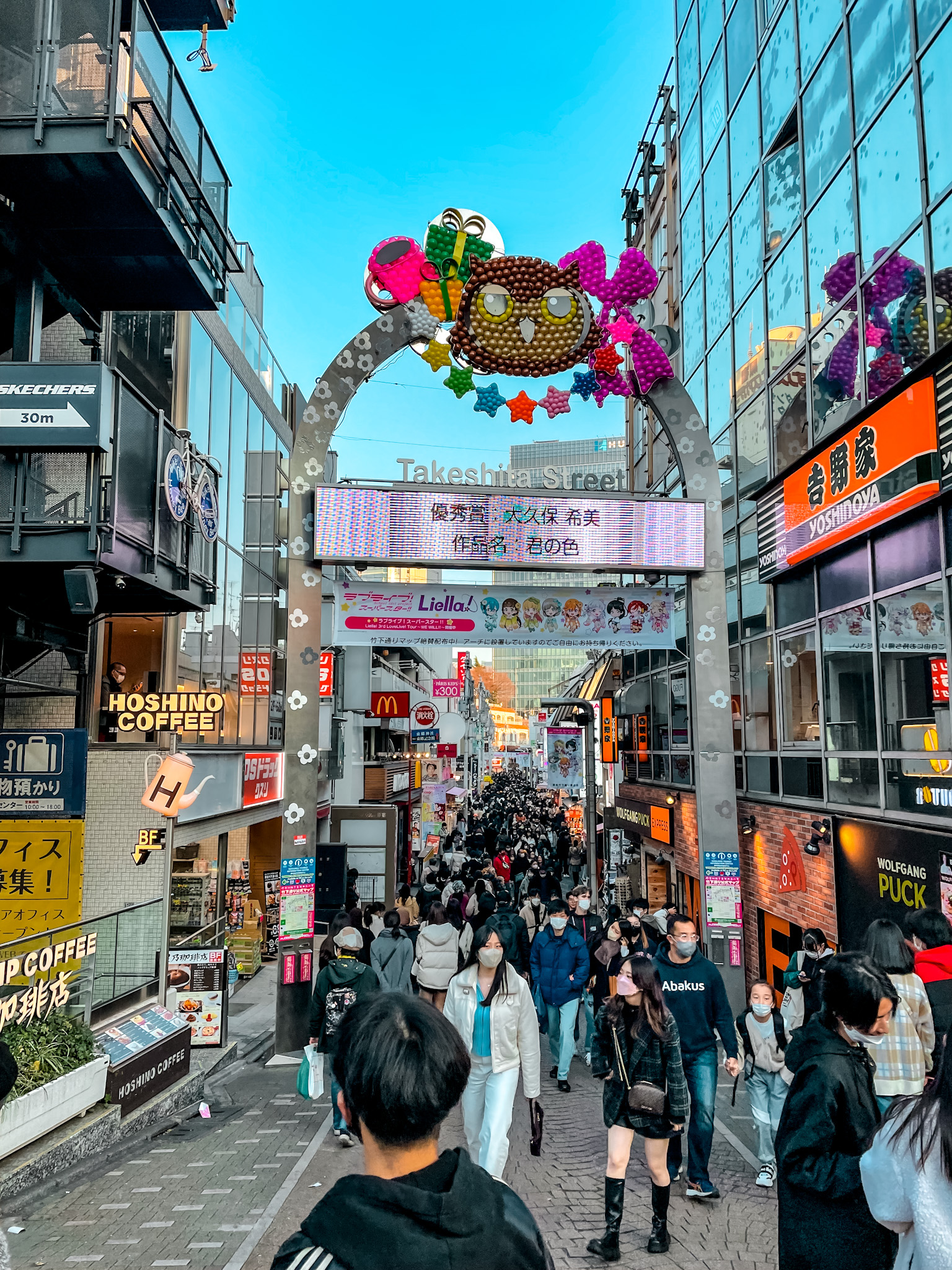
Cat Street / Ura-Harajuku (chill indie lane)
Slip behind Meiji-dōri to Cat Street—a relaxed pedestrian route between Harajuku and Shibuya with vintage shops, indie labels, and coffee stops. Great palate cleanser after Takeshita.
Laforet Harajuku (the fashion landmark)
A multistory icon with ~140 shops, avant-garde and street brands under one roof. Easy five-minute walk from Harajuku Station.
Rooftops & views (free breaks)
- Tokyu Plaza Omotesandō has a photogenic mirrored entry and terrace;
- Tokyu Plaza Harajuku Harakado (opened 2024) adds fresh terraces and eateries across from Omotesandō, great perch between shop runs.
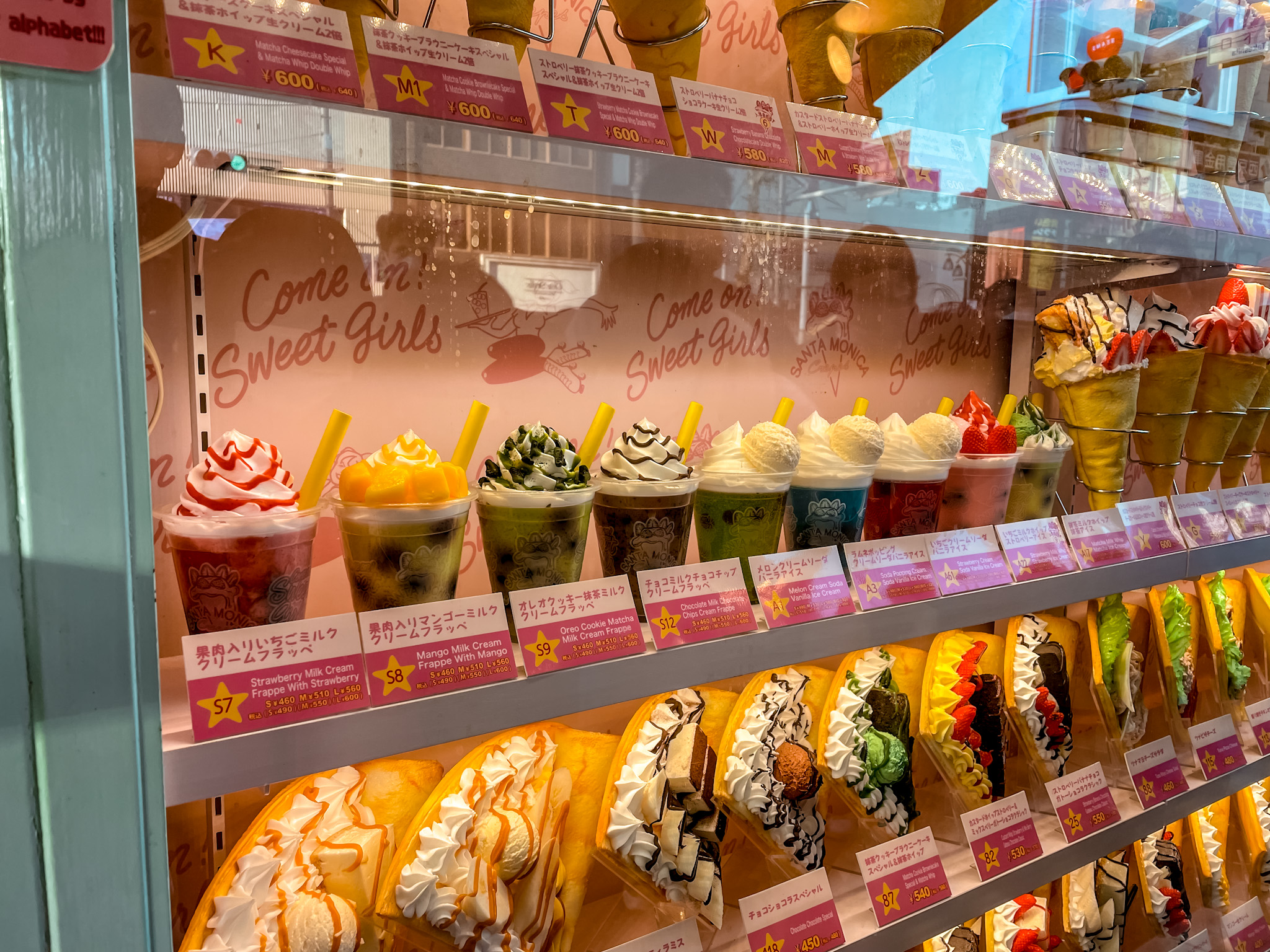
Fast FAQ
Where exactly is Takeshita Street?
Directly across from JR Harajuku Station’s Takeshita Exit, you can’t miss the arch.
Typical hours?
Most shops: ~11:00–20:00 (some later). It’s busiest afternoons/weekends.
Is the street car-free?
Yes, pedestrianized during peak daytime hours (commonly 11:00–18:00).
How pricey are crepes?
At Santa Monica and peers, expect under ¥1,000 for most combos; fancier/taller = more.
What’s the “classic” crepe?
Banana + whipped cream + chocolate is canon; seasonal fruit specials are fun too. (Crepe culture here dates to the late ’70s).
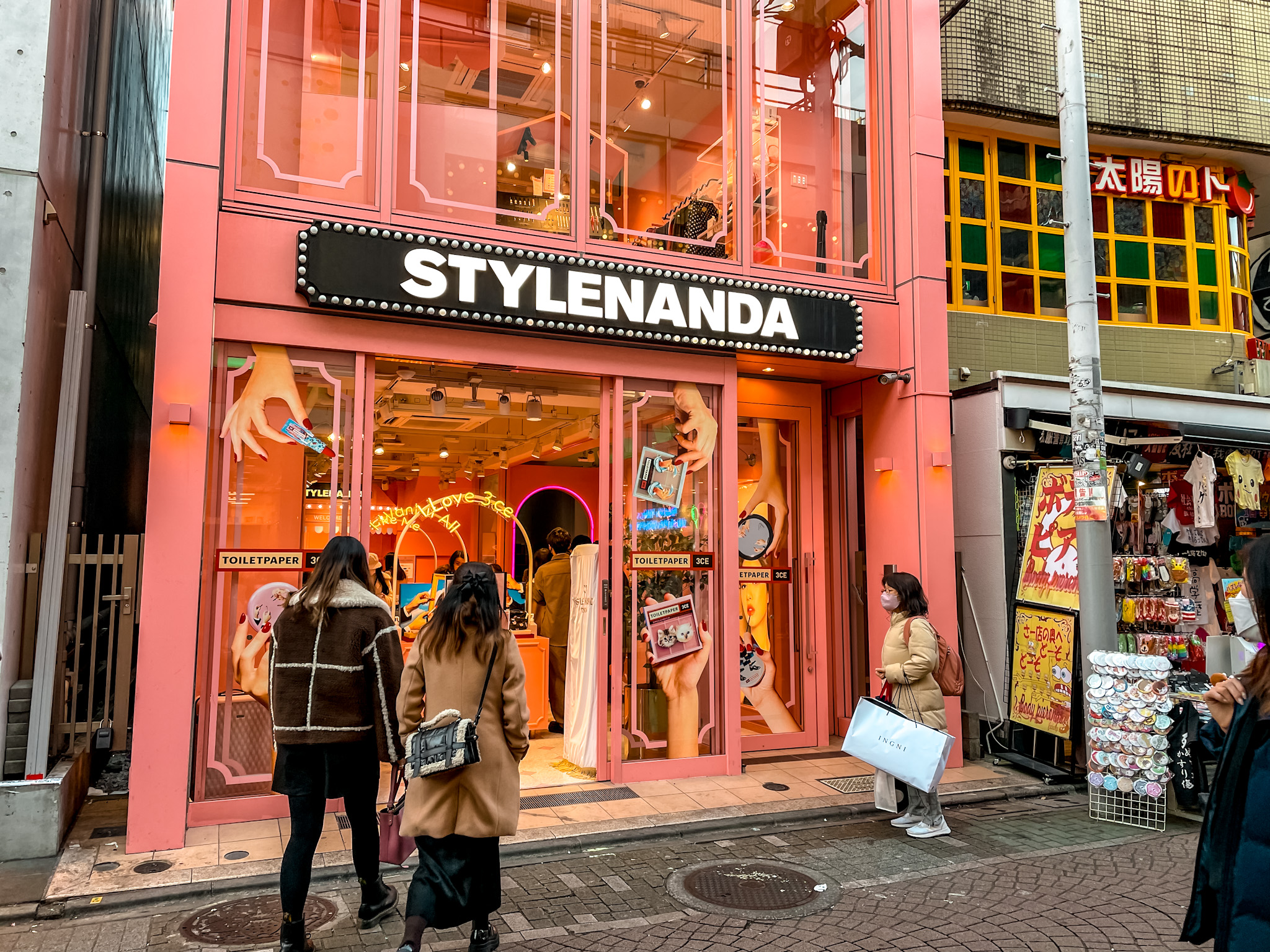
My easy half-day route (copy this)
Harajuku Station (Takeshita Exit) → Takeshita Street snack run (Santa Monica Crepes if you can) → quick detour to Laforet → stroll Omotesandō (coffee at Omotesandō Hills) → loop Cat Street for indie browsing → finish at Meiji Jingu before sunset for a quiet reset.
